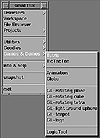
Figure 31.15. The Games & Demos option menu.
| Previous | Table of Contents | Next |
The Utilities option provides 13 tools that assist you in programming in the ST/X environment. Table 31.10 gives you a brief description of each tool.
| Utility | Description |
|---|---|
| Transcript | Opens the Transcript view. |
| Window tree | Displays a graphical tree representation of the window hierarchy of all windows that are active or in wait state at the time it was requested. |
| Class tree | Displays a graphical tree representation of the class hierarchy of the system. |
| Event monitor | Displays a view that monitors events. |
| Process monitor | Displays a view that gives information about all currently active or waiting processes. This information changes as the state of the processes changes. |
| Memory monitor | Displays a graph that tells you the present memory usage and changes as the memory usage changes. |
| Memory usage | Displays a table of the classes and the number of instances of each, average size, bytes, and percentage of memory used by each. |
| collect Garbage | Runs a Generation Scavenge algorithm to collect short term objects and destroy them. If an object survives long enough, it is moved to an area of memory where it remains until the user requests its collection. |
| collect Garbage & compress | Same as Collect Garbage but also compresses to recover space. |
| fullscreen hardcopy | Takes a picture of the screen and asks for a name of a file with a .tiff extension in which to save the image. |
| screen area hardcopy | Same as fullscreen hardcopy but only for a specific area of the screen. |
| view hardcopy | Same as fullscreen hardcopy but for one specific view only. |
| ScreenSaver | Enables you to choose from one of three different screen savers to use in the ST/X environment. |
The Goodies option of the Launcher menu provides a pull-right menu of six different tools that are useful at any time, not just when you program in Smalltalk. The Goodies are described in Table 31.11.
| Goodie | Description |
|---|---|
| Clock | Displays an analog clock in a square with a toggle for the second hand. |
| Round Clock | Same as the clock but is round and remains visible when it is minimized. |
| Directory View | Displays a pictorial representation of files and directories. A folder represents a directory and a document is a file. |
| Mail Tool | A tool for managing electronic mail. |
| News Tool | A repository for news, information, and documents. |
| Draw Tool | A fairly comprehensive tool for drawing diagrams, charts, pictures, and so on. |
Contained in the pull-right menu of this option are games for your enjoyment and example applications that may be useful. The Games & Demos option menu is shown in Figure 31.15.

Figure 31.15. The Games & Demos option menu.
All views that show text allow the usual editing functions of that text through a pop-up menu. The functions available in this menu are described in Table 31.12.
| Function | Description |
|---|---|
| again | Repeats the last edit. |
| copy | Copies the selected text. |
| cut | Cuts the selected text out of the file. |
| paste | Pastes the text that was copied or cut prior to choosing the paste option to the current position of the pointer. |
| accept | Once you have completed editing, you must use this option to save the changes to the file; otherwise the changes will not be written to the file. |
| doIt | Evaluates the highlighted text. |
| printIt | Prints a representation of the result of the evaluation at the current cursor position. |
| inspectIt | Invokes the Inspector view on the result. |
| search… | Enables you to search for a specific string. |
| goto… | Enables you to move to a specific location in the file. |
| font… | Enables you to change the font of the file. |
| indent… | Enables you to change the indenting of the file. |
| save as… | Enables you to save the file under a different name. |
| Prints the file. | |
To select or highlight text, press the left mouse button over the first character and move the mouse (while holding the mouse button) to the end of the text you wish to select, and then release the mouse button. If you press the left mouse button again, the highlighting is removed and you can select something else.
To scroll through the text, use the scroll bars on the left of the view. By clicking the mouse below or above the thumb, the text scrolls one page for every click. If you press the Shift key at the same time as you click, the text scrolls to the position of the pointer in the scroll bar. This is useful for scrolling rapidly through long documents.
The Inspector enables you to inspect an object. It consists of two subviews, one showing the names of the object’s instance variables and the other showing the value of the selected instance variable. You can start an inspector by using the inspectIt function on the edit menu or by sending one of the following messages to an object:
anObject inspect
or
anObject basicInspect
The basicInspect command will open a general inspector that shows instance variables as they are physically present in the object. The inspect command is redefined in some classes to open an inspector showing the logical contents of the object.
| Previous | Table of Contents | Next |